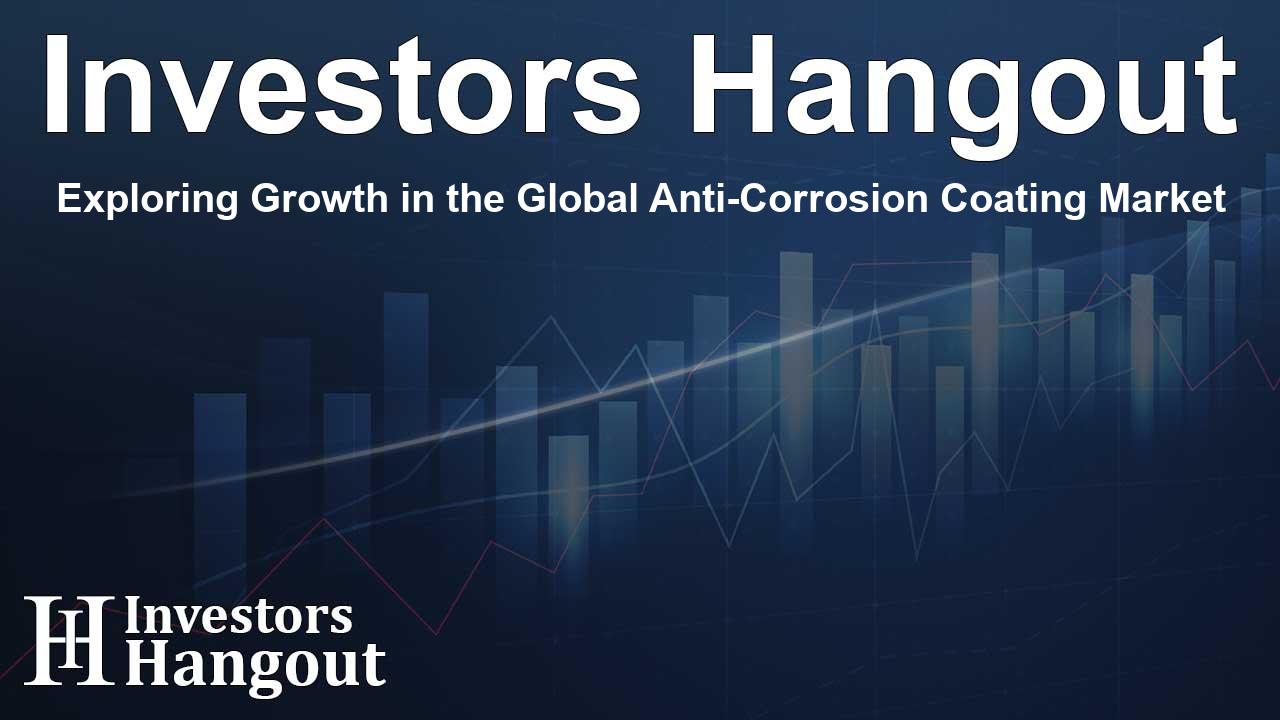Exploring Growth in the Global Anti-Corrosion Coating Market

The Anti-Corrosion Coating Market Surge
Wilmington, Delaware - The anti-corrosion coating market is on an impressive growth trajectory, driven by an increasing demand for durable protective measures across numerous industries. Recent reports indicate that this market, which was worth $32.6 billion in 2023, is anticipated to reach a remarkable $54.4 billion by 2033, translating to a steady growth rate of 5.4% annually from 2024 to 2033.
Drivers of Market Expansion
Several key factors are propelling the growth of the anti-corrosion coating market. A main contributor is the surge in infrastructure development as countries around the world invest in enhancing their public and private facilities. This focus on infrastructure is rapidly increasing the demand for effective coatings that offer protection against corrosion.
Additionally, as the global emphasis on sustainability intensifies, manufacturers are innovating in the development of environmentally friendly coatings. The shift towards low-VOC and water-based formulations reflects broader regulatory changes and consumer preference for sustainable products.
Technological Innovations in Coatings
Technological advancements in coating formulations are also driving growth in the sector. Companies are incorporating new technologies that enhance the effectiveness of anti-corrosion coatings. This includes the development of biodegradable coatings and formulations that minimize harmful emissions, demonstrating a commitment to environmental stewardship.
Segment Highlights
Dominance of the Epoxy Segment
Among various types of anti-corrosion coatings, the epoxy segment has shown significant strength, accounting for a large share of market revenue. Its popularity can be attributed to its cost-effectiveness and long-lasting protective qualities. Epoxy-based coatings are increasingly sought after for projects related to infrastructure, where robustness and durability are paramount.
Soaring Demand in the Marine Industry
The marine segment of the market is another major player, propelled by the need for durable coatings suitable for harsh marine environments. The demand for offshore energy infrastructure is growing; thus, coatings that can withstand saltwater exposure and extreme weather conditions are essential.
Regional Insights and Growth Opportunities
Regionally, the Asia-Pacific market stands out as one of the fastest-growing areas for anti-corrosion coatings. This region is a hub for automotive manufacturing, with countries like China and Japan leading the way. The automotive industry's need for rust protection extends to enhancing the aesthetic qualities and durability of vehicles, thereby increasing coating demand.
As businesses across various sectors recognize the long-term economic benefits of using quality anti-corrosion coatings – including reduced maintenance costs and enhanced product longevity – the adoption of these solutions is likely to grow. This trend is prevalent in construction, energy, and maritime sectors.
Leading Players in the Anti-Corrosion Coating Market
The anti-corrosion coating market is competitive, with several leading companies. Major players include AkzoNobel N.V., PPG Industries, Sherwin-Williams Company, and BASF SE, among others. These companies are engaging in strategic partnerships, product launches, and mergers to consolidate their market positions.
Conclusion
Understanding the dynamics of the anti-corrosion coating market reveals not only its current state but also its future potential. With persistent innovation, an emphasis on sustainability, and increasing market demand, the future looks promising for companies involved in this vital industry.
Frequently Asked Questions
What is the projected market size of anti-corrosion coatings by 2033?
The anti-corrosion coating market is expected to grow to approximately $54.4 billion by 2033.
Which type of anti-corrosion coating holds the largest market share?
The epoxy segment is currently the largest contributor to the market and is expected to maintain its lead due to infrastructure development.
Why are low-VOC coatings becoming more popular?
Low-VOC coatings are favored for their reduced environmental impact, aligning with regulatory measures and consumer demand for sustainable solutions.
What industries drive the demand for anti-corrosion coatings?
Key industries include construction, automotive, energy, and marine, each requiring reliable protection against corrosion.
Which companies are leading the anti-corrosion coating market?
Major players include AkzoNobel N.V., PPG Industries, and Sherwin-Williams Company, recognized for their innovative products and market strategies.
About The Author
Contact Logan Wright privately here. Or send an email with ATTN: Logan Wright as the subject to contact@investorshangout.com.
About Investors Hangout
Investors Hangout is a leading online stock forum for financial discussion and learning, offering a wide range of free tools and resources. It draws in traders of all levels, who exchange market knowledge, investigate trading tactics, and keep an eye on industry developments in real time. Featuring financial articles, stock message boards, quotes, charts, company profiles, and live news updates. Through cooperative learning and a wealth of informational resources, it helps users from novices creating their first portfolios to experts honing their techniques. Join Investors Hangout today: https://investorshangout.com/
The content of this article is based on factual, publicly available information and does not represent legal, financial, or investment advice. Investors Hangout does not offer financial advice, and the author is not a licensed financial advisor. Consult a qualified advisor before making any financial or investment decisions based on this article. This article should not be considered advice to purchase, sell, or hold any securities or other investments. If any of the material provided here is inaccurate, please contact us for corrections.
